- Guides
- B2B
-
Climbs
-
Climb Elbrus
- Elbrus individually
- Elbrus from the South, 9 days
- Elbrus from the South, 7 days
- Elbrus from the South in 1 day
- Elbrus from the North
- Elbrus Two Summits
- Elbrus Traverse South to North
- Elbrus Traverse North to South
- Elbrus "Cross" from South
- Elbrus "Cross" from North
- Kazbek+Elbrus
- Elbrus from the West
- Elbrus by helicopter
- Elbrus holidays, 9 days
- Elbrus holidays, 7 days
- Tinder Tour: Climbing Mount Elbrus
- Climb Elbrus from the South, 9 days with Sergey Baranov
- Under 5000 m
- 5000+ meters
- 6000+ meters
- 7000+ meters
- 8000+ meters
-
Climb Elbrus
-
Trekking
-
See 8000m
- K2 base camp
- Everest base camp
- Everest base camp via Gokyo
- Everest base camp in a week
- Annapurna circuit
- Trekking the Manaslu Circuit
- Trekking to Kanchenjunga Base Camp
- Trekking to Kanchenjunga Base Camp (Short)
- Trekking to Kanchenjunga Base Camp (India)
- Trekking to Makalu Base Camp
- Trekking to Annapurna BC
- South America
- Asia
- Africa
- Russia
- Europe
-
See 8000m
-
Adventures
-
Africa
- Tour to Morocco for New Year
- Morocco: Toubkal and the mysteries of the Sahara
- Tour to Eritrea: Dahlak Archipelago and Rashaida Nomads
- Tour to Rwanda: Mountain Gorillas and Mount Bisoke
- Ethiopia
- Tour to Uganda: Queen Elizabeth National Park and Mountain Gorillas
- Safari Tanzania
- Safari Uganda
- Tour to Zimbabwe and South Africa: Victoria Falls, Cape Town, and Cape of Good Hope
- Namibia
- Safari Kenya
- Tour to Botswana: Okavango Delta and Chobe National Park
- South America
- Asia
-
Africa
- Ski-touring
- VIP
- Useful
- About
Climb Kilimanjaro, Marangu
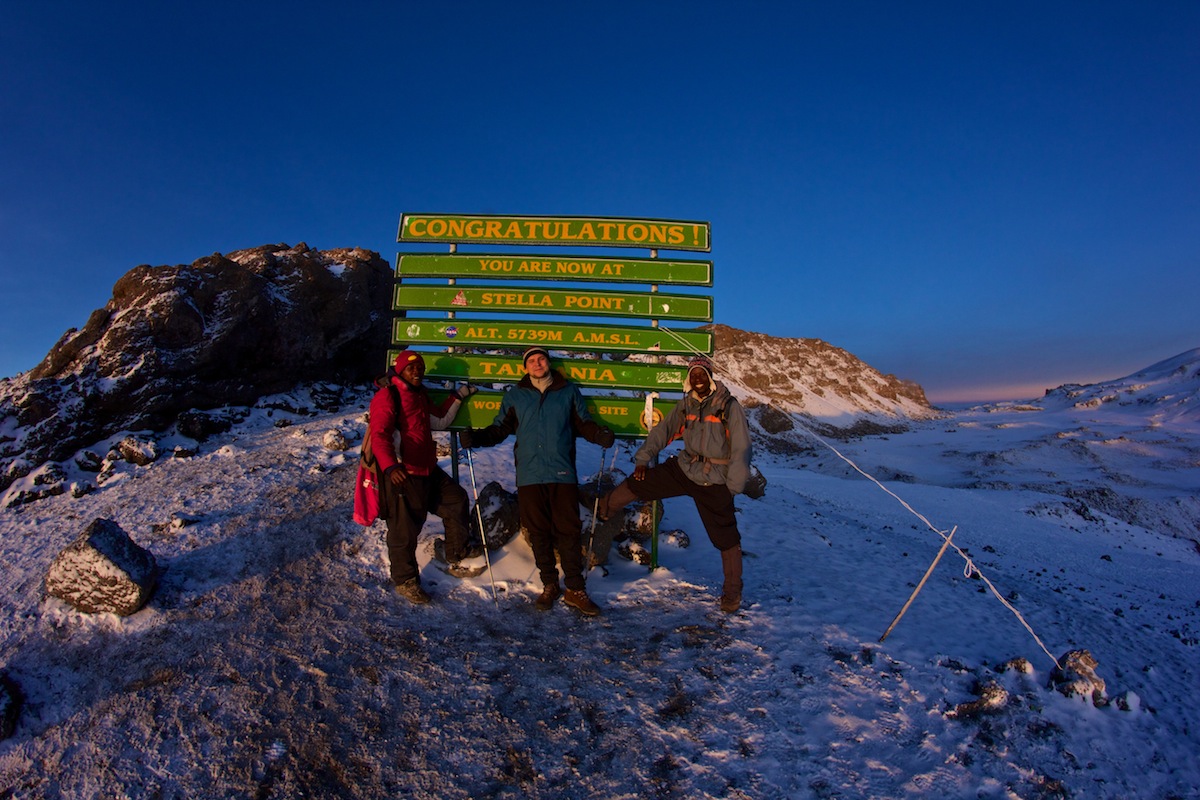
- Height (m)
- 5895
- Duration
- 7 days
- Difficulty
- Low
- Continent
- Africa
- Children
- From 14 years old
- Accomodation
- Without tents
2990 $
Why to go with us?
About the tour. About the tour Itinerary to Climb Kilimanjaro by Marangu route. Day 1:Meeting at the airport in Arusha, Tanzania and transfer to the hotel in Moshi. If you arrive at the airport of Nairobi in Kenya, then make an independent bus transfer (local transport) to the city of Arusha or directly to the […]
НаверхAbout the tour.
The peak of the mighty Kilimanjaro volcano is Uhuro Peak, which the human foot first entered on October 5, 1889. German Hans Mayer and Austrian Ludwig Purtcheler were the first to conquer this mountain. After that, all the climbers of the world began to come to Tanzania like crazy, hoping to repeat the feat of two famous climbers. One should not think that climbing Kilimanjaro itself requires some special skills and experience inherent in a climber, heavy equipment and all kinds of equipment. No, to reach the highest point, Uhuro Peak, you just need to have good physical fitness and, of course, endurance.
Climbing Kilimanjaro along the Marangu route is one of the most popular choices. This route is quite long (68 km), making it possible to carry out a smooth acclimatization. Coupled with comfortable accommodation in cabins, this makes it the most suitable for those who have no experience of high-altitude climbing.
Climbing to the top of Kilimanjaro along the Marangu route usually takes 5 or 6 days. We recommend our clients a 6-day program with one additional overnight stay at 4000 meters, since it is usually difficult for the average person to acclimatize faster for such a height. Climbing Kilimanjaro along the Marangu route also offers the traveler more beautiful landscapes than other routes, with the opportunity to see various ecosystems, including rainforests, savannas, alpine zones and glaciers.
However, like any high-altitude ascent, climbing Kilimanjaro along the Marangu route is physically and psychologically challenging and requires preparation. It is important that you have good physical shape, be attentive to the little things, and a trekking experience is desirable. It is also necessary to pay attention to proper nutrition and drinking regime, especially in the hot season in the first half of the route and in any of the seasons at altitude, in order to avoid altitude sickness. A detailed article on which season to choose for climbing is on our website. Learn more about how to train to easily climb Kilimanjaro here.
We are also conducting an equally impressive tour of Kilimanjaro along the Machame route.
Climb Kilimanjaro
Day 1. Meeting at the airport in Arusha, Tanzania and transfer to the hotel in Moshi. If you arrive at the airport of Nairobi in Kenya, then make an independent bus transfer (local transport) to the city of Arusha or directly to the city of Moshi to the hotel (if necessary, we can order an individual Nairobi-Moshi transfer). The total travel time from Nairobi is about 5 hours. The group arriving at the place is met by our representative. Accommodation in 3* hotels with private facilities in the city of Moshi, free meals. A thorough briefing on the upcoming ascent is being made, the necessary equipment is being prepared. Dinner and instructing the group. Overnight at the hotel.
Day 2. Transportation to the gates of Marangu (the starting point of the trail is at an altitude of 1980 m). A group of climbers is drawn up, the necessary equipment and personal cargo (should not be heavier than 20 kg) are distributed to porters. The group extends from the starting point of the path and goes to Mandar Khat – a camp located at an altitude of 2700 m. The length of the road is 12 km and takes 5 hours, during which climbers can observe a picturesque rainforest passing along a gentle ridge. There is also another trail. It can be reached by turning left immediately after entering a reserved place. This trail goes along the course of the river and after 1.5 hours of travel it again leads climbers to the main trail. The halt point is the Mandara camp, accommodation in wooden huts.
Day 3. The path to the camp Horombo Hat (lifting to a height of 3720 m). A 15 km journey takes approximately 6 hours. The trail leads a group of climbers through a mysterious thicket of forest, it goes around the Moundi crater. It is here that you can see the Kibo crater, the ascent to which is the intended goal of the conquerors of the peaks. Further, the trail goes through alpine meadows of amazing beauty, on which huge lobelias and godparents grow, their height reaches as much as 6 meters! The halt point is Horombo Camp, accommodation in wooden huts.
Day 4. The path to the Kibo Hat camp (lifting to a height of 4700 m). A 15 km journey takes approximately 6 hours. Passing along this trail, climbers will be accompanied by alpine semi-desert and rocky terrain. An additional trail leaves the Mawenzi camp, which occurs on the way to Kibo camp, which is an order of magnitude lighter and shorter by one hour. She will certainly be interested in climbers who on the previous day already explored the standard path on the day of acclimatization. The halt point is Kibo Camp, accommodation in wooden huts. The group rests before the assault until midnight.
Day 5. Climbing Kilimanjaro. The assault time varies about 5-7 hours. A group of climbers are already meeting the dawn, being at the highest point in Africa – the peak of Uhuro. The height above sea level is 5895 m. Those who wish can descend into the interior of the crater for 100 meters, go through the glaciers. Next is the descent back to the Kibo Hat camp, the camp is being collected. A 5-6 hour journey continues down to the Horombo Hat camp (a descent to a height of 3720 m is made). The halt point is the Horombo Hat Campground, accommodation in wooden huts.
Day 6. A group of climbers descends to the end of their ascent path – the gates of Marangu (height 1980 m). 27 km of travel takes about 6 hours. The trail leads climbers past the Mandara camp, which is replaced by a tropical forest of amazing beauty. At the end of their journey, members of the group who reached the top receive a certificate attesting to the fact of climbing one of the highest points in Africa. There are two types of certificates here: gold – for the conquerors of Uhuro Peak, and green – for those who were able to get to Gilman Peak. Next comes the farewell to the staff. It’s good form to tip them. The group moves to a 3 * hotel with amenities – the city of Moshi. The rest of the time is allocated for rest.
Day 7. Moving a group of satisfied climbers to the airport by convenient transport. Departure.
Not included in the cost of expedition to climb Kilimanjaro:
- Flight ticket to Kilimanjaro (Tanzania) and back
- Take off by helicopter after climbing (you can shorten the tour)
- Transfer Nairobi-Moshi-Nairobi
- Mountaineering insurance
- A Tanzanian visa. We strongly recommend online visa processing in advance https://visa.immigration.go.tz/
- Lunch and dinner at the hotel before and after the ascent
- Single accommodation (60 per night per person)
- Required tips after climbing (250-300 USD per person)
- Any costs associated with changes to the program
Insurance
НаверхEquipment.
Скачать PDFThe documents:
- The passport
- Flight tickets
- Medical insurance
- Information about vaccination against yellow fever
Personal equipment:
- Backpack. 20-30l.
- Sleeping bag, comfort temperature from -5С., -10С.
- Mat
- Trekking poles
Clothes and shoes:
- Trekking boots
- Sneakers (for cities)
- Waterproof layer – Jacket + trousers. The industry offers a range of products from simple 5000/5000 memban to Gore-Tex products
- Fleece suit
- Lightweight trekking pants
- Thermal underwear top+bottom
- Long Sleeve T-shirts
- Puff
- The gloves are thick
- The gloves are thin
- Bandana (in addition to protection from the Sun in the valley, it can be used to warm the throat or face in the cold)
- Hat
- Warm trekking socks for climbing day
Other
- Flashlight LED head with a glow reserve of at least 12 hours
- Sunglasses
- Ski mask (optional)
- Leggings
- Thermos 1L
- Reusable bottle
- A duffel bag that you will give to the mule
- Hermetic bags for clothes and a sleeping bag (or plastic bags in excess)
- Camping towel
- Sun cream, hygienic lipstick
- Mosquito repellant
- Personal first aid kit
- Elastic bandage and/or support bandage
- Malaria pills
You may also like
-
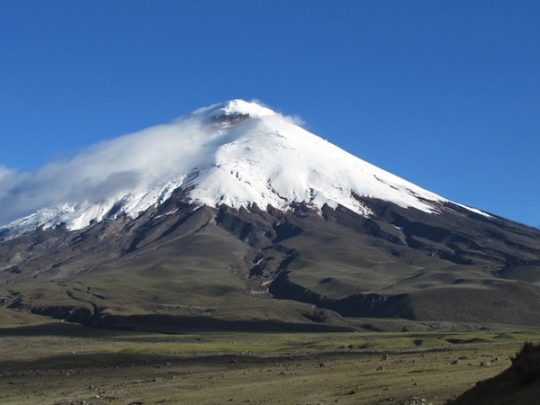 3,900 $
3,900 $Climb Chimborazo and Cotopaxi
- Height (m)
- 5897, 6384
- Duration
- 11 days
- Difficulty
- Moderate
- Continent
- South America
- Children
- From 14 years old
- Accomodation
- Hotels only
-
Discount!
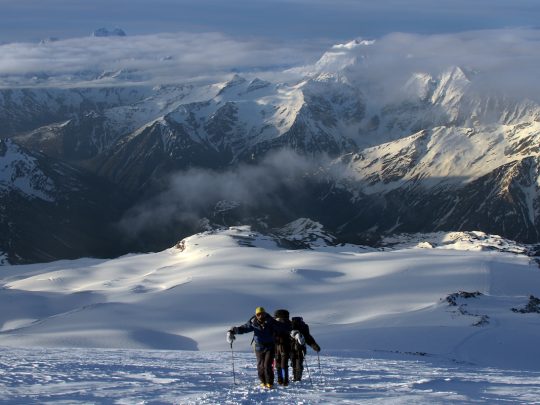 Original price was: 1,800 $.1,620 $Current price is: 1,620 $.
Original price was: 1,800 $.1,620 $Current price is: 1,620 $.Climb Elbrus from the South, 9 days
- Height (m)
- 5642
- Duration
- 9 days
- Difficulty
- Low
- Continent
- Europe
- Children
- From 12 years old
- Accomodation
- Without tents
-
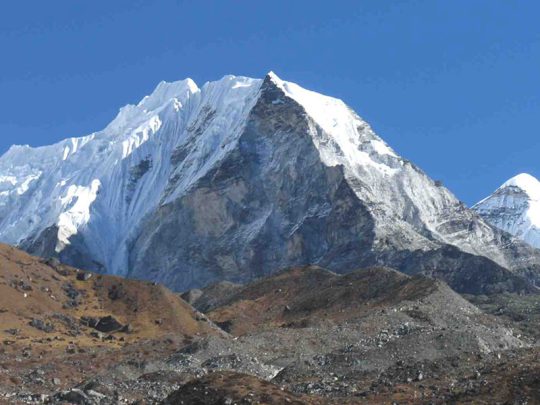 3,129 $
3,129 $Climb Island peak
-
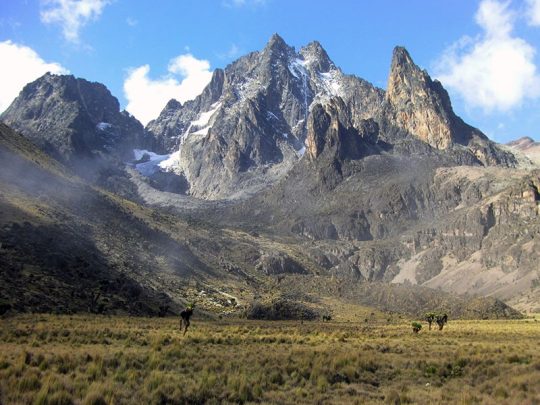 2,500 $
2,500 $Safari Kenya
- Height (m)
- 2200
- Duration
- 9 days
- Difficulty
- Low
- Continent
- Africa
- Children
- From 2 years old
- Accomodation
- Hotels only